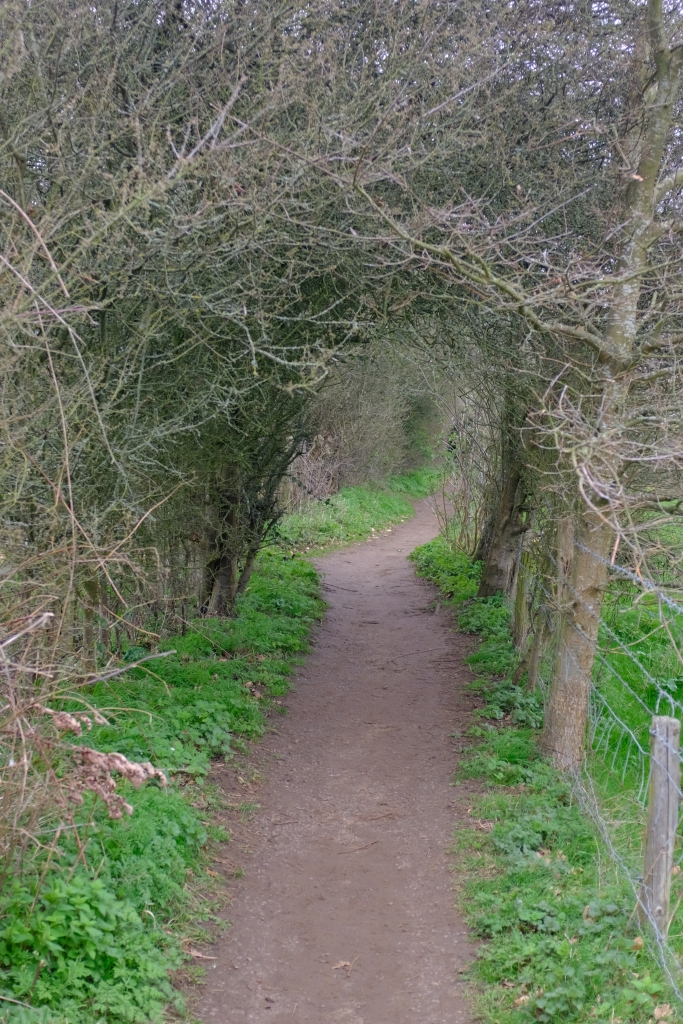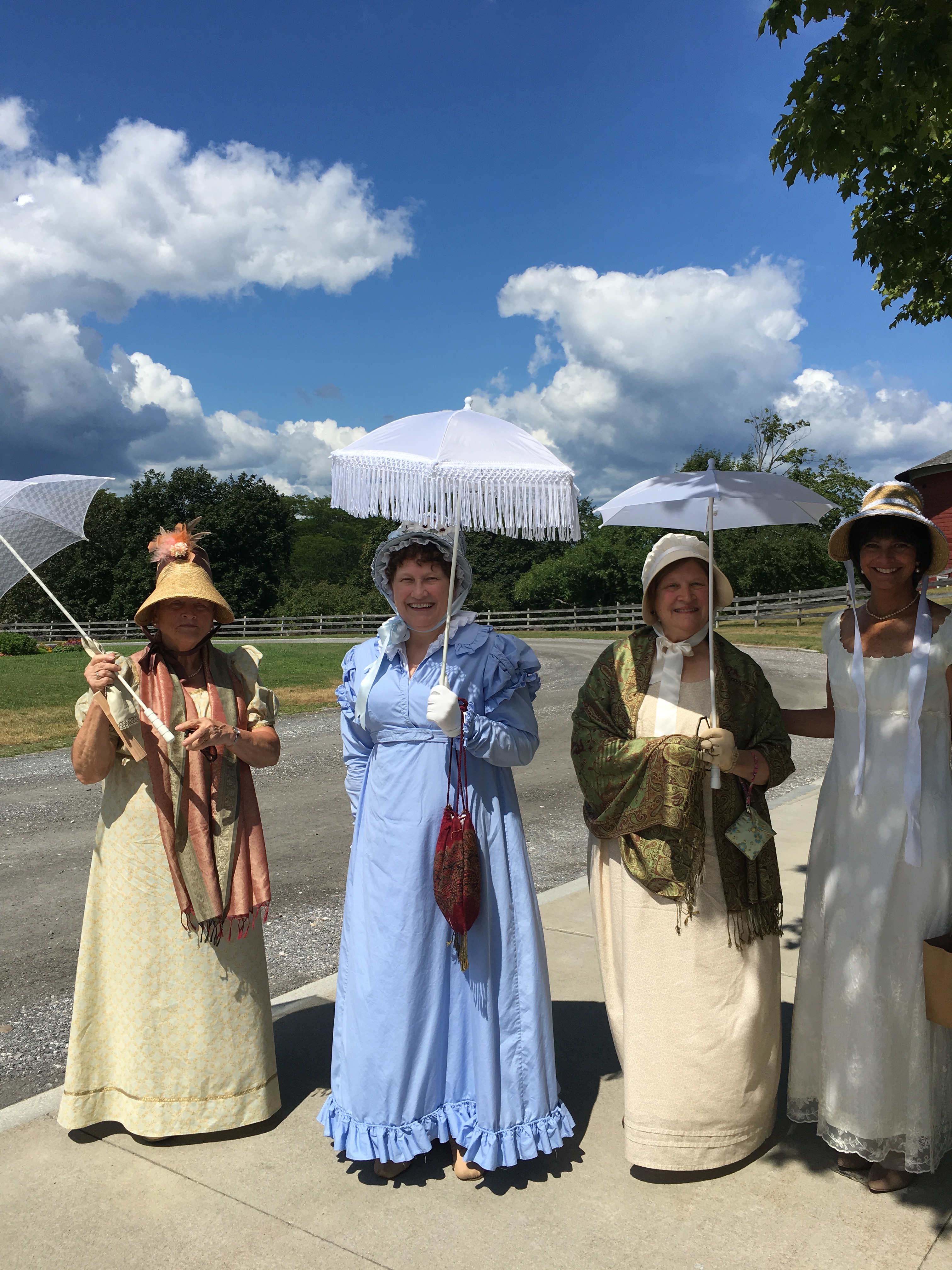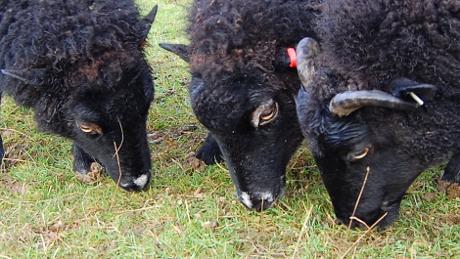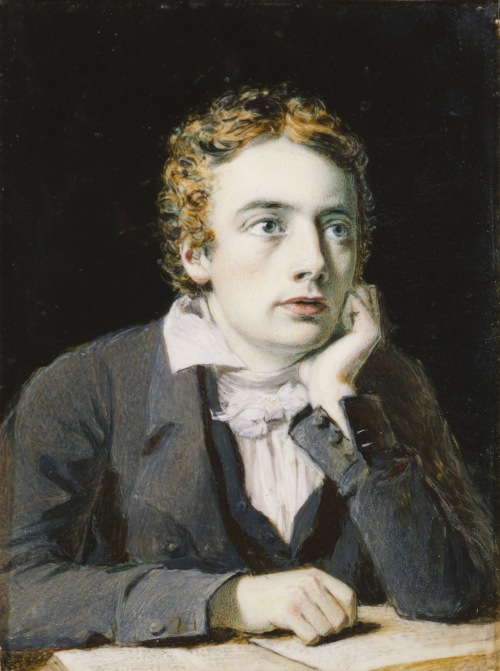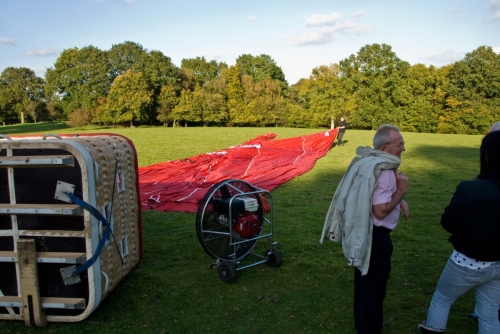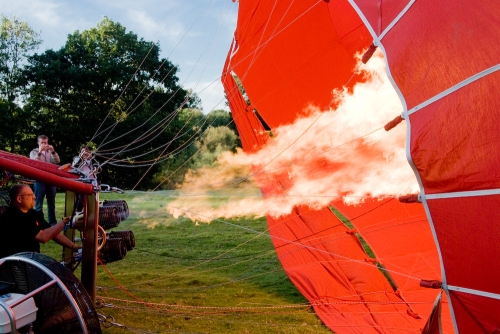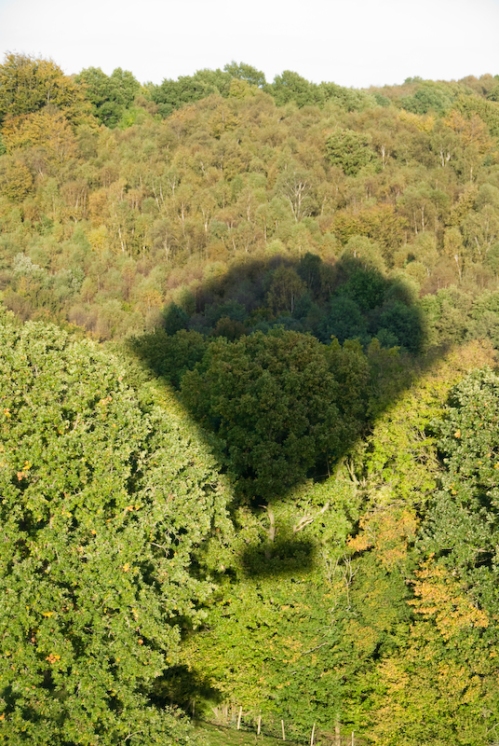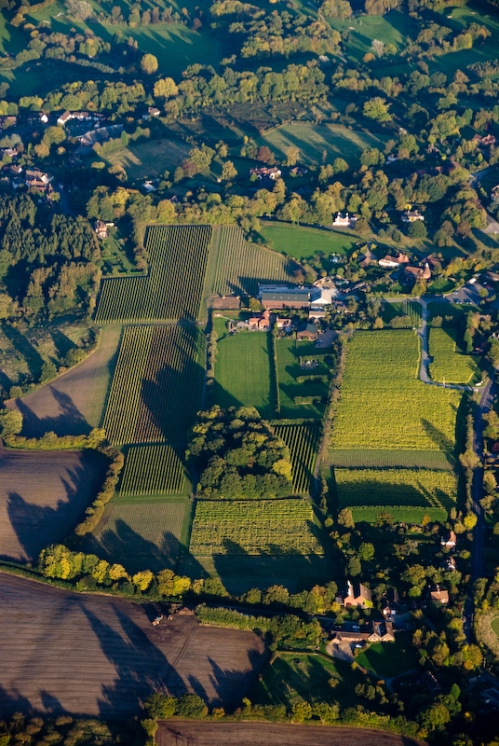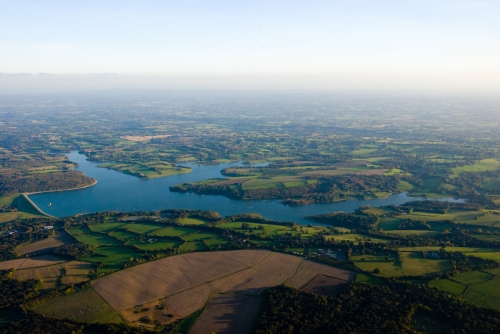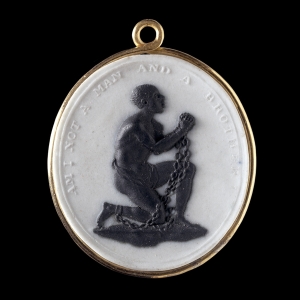Dear Readers: Please welcome Tony Grant today, as he gives us a bit of a travelogue through the village of Shere in Surrey. This all came about because of the holidays – and the holidays always brings the need to re-watch The Holiday with Kate Winslet, Jude Law, Cameron Diaz and Jack Black. And whenever you watch this movie, you want to immediately move to England and live in Kate Winslet’s cottage (and having Jude Law around would not be a bad thing either…) – so then you start looking into where that cottage actually is, and then you find out it doesn’t actually exist at all, and then you start researching this village of Shere and looking for real real estate, so then you realize you have a better person to help with this, and who better to ask to do a blog piece on it but Tony Grant, who with his love of history, great photography skills, and the fact he doesn’t live all that far away, made it a no-brainer to implore him to write something… here is the result – please note that many of the pictures are shots of the village and surrounding area, randomly scattered throughout the post unless specifically identified, and all by Tony Grant. Hope you enjoy this travel adventure – and be sure to put Shere on your itinerary when next you are in England (whenever that will be … we can only live in Hope).
**************

SHERE, A Village in Surrey, by Tony Grant
For as long as I can remember, my family and I have visited Shere Village in Surrey every Summer. When the children were really small and we only had Sam and Alice as toddlers in those days, Shere Village with the river Tillingbourne rippling its cool glassy way behind the backs of shops and under the low bridge in the High Street always had its fascinations. Ducks and geese in abundance swam in the river or stood on the river bank and Sam and Alice were very excited and interested in feeding them with bits of bread and just being able to look at them and see how they behaved. After Emily was born and later Abigail came along, we continued our tradition of going to Shere. We loved walking round the village, being in amongst ancient buildings, some timber framed with whitewashed walls, some constructed from the local greensand stone, wisteria and climbing roses draping themselves over and festooning the houses. It is the quintessential English country village.
When we visit Shere we often walk further afield, up into the hills and valleys around Shere. Shere is set in that part of Surrey where Chalk downland to the north provides a vista of smoothly rounded and curving steep sided hills, voluptuous in their contours. Sculptors such as Barbara Hepworth were inspired by the contours of the English countryside. To the south and west stretches the Greensand Ridge consisting of hard Bargate Stone, ironstones and soft sandstones. These rock formations are part of the western extremities of The Weald anticline. Greensand was laid down in the Cretaceous period over 145 million years ago and the chalk downland was also laid down in the Cretaceous period about 65 million years ago. These two geological formations are apparent in the landscape, buildings and farming in the area around Shere.
Driving to Shere is always a very pleasant experience. We live about 20 miles north of Shere in a straight line within the London Borough of Merton. According to Google maps, when I type in Motspur Park to Shere by car, it gives me 23 miles as the distance and times the driving journey at 37 minutes. I always think the time GOOGLE gives is a useless bit of knowledge. If the roads are clear I can get there much quicker and if there are road works, need I say more? Driving down the A3, a major road, from South London towards Portsmouth usually has a lot of traffic on it. The A3 takes us over the M25, that motorway that encircles London and what a sight that always is, a continuous flow of multi lane traffic that goes on for ever and ever like a gigantic sinuous serpent. Not that the A3, a three lane highway, doesn’t have its attractive features. Most of it passes south through silver birch, oak and ash woodland. Oxshott Woods, a vast area of heathland , wild water ponds and trees, is a haven for horse riding, running , cycling and walking, if that is what you want.
Along the A3 we pass the turn off for Painshill, which incidentally Jane Austen mentions in letters. She passed the Painshill Estate on her way to London. Painshill once had a great house attached to it but the park has been restored to its 18th century glory. The landscaping is amazing with lakes, temples, grottos and pagodas. An 18th century pleasure garden. But, we are not going there today.
It is not far until we turn off for Ockham on the left. Immediately we get on to single track country roads between fields and more woodland. We soon drive along a road that borders a large estate. High brick walls enclose it for miles with attractive gate houses and cottages positioned along the perimeter here and there. It encloses an 18th century deer park, where also horse breeding and sheep farming are practiced today. We pass medieval stone built, All Saints Church on the right, set back amongst trees with its lichen covered gravestones, some dating back centuries.
Surrey is a beautiful county. It has much woodland and is famous for its bluebell woods which are carpeted with bluebells in the spring. You also come across fields which grow oilseed rape. You can’t miss them. A field of oilseed rape is bright yellow. The oilseeds are used to make vegetarian butters and spreads. It is also a natural product that is put into shampoos and soaps. Another crop Surrey is famous for are its lavender fields. Lavender has such a lovely powerful scent. Walking through a field of lavender can give you quite a high. The lavender is used in perfumes and medicines. It is great for a bouquet to hang in your kitchen or even in your bedroom.
Surrey has mostly mixed farming. You come across fields with dairy cows grazing in them, horse breeding is prevalent, there are some wheat fields and a lot of sheep are bred on the grassland that grows well on the chalky soils of the chalk downs. Grassland, for sheep and cattle is what you find around the environs of the village of Shere.
From Ockham we drive on through some of those bluebell woods and dipping into shallow valleys in some places but mostly climbing higher onto the chalk downs above Shere. From the top of the downs leading into the Village itself, we pass along a narrow valley down a steep road called Combe Lane. The valley begins as a small indentation in the land at the top of the downs and continues making a long deepening cut into the hills and drops, to the lower level near Shere.
What is interesting about this small, long valley is what is in it. On the far side you can catch a glimpse of a small concrete building nestling into the valley side. It has two narrow slits facing down the valley. During World War II when Britain thought Germany might invade, all sorts of preventative defensive measures were put in place all over the British countryside. You can still come across areas with tank traps in Surrey and other southern counties. Near where I was born in Southampton you can come across large concrete foundations built at various places along the side of Southampton Water reaching from the Hamble River right up to the River Itchen. These were the foundations for the massive anti- aircraft guns that were located on these sights. However the small hidden concrete boxes, called pill boxes, were the most prolific constructions. Railway lines, major roads and as it seems some valleys were provided with them. They were machine gun installations and artillery positions, partly hidden and would only have been seen at close quarters and of course by then they would have spewed out shells and machine gun bullets at quite a rate. They could only be thought of as a slowing tactic. The shell from a Tiger Tank would have destroyed a concrete pill box in an instant. I grew up with these sort of military emplacements dotted about where I lived in Southampton. They were manned by what was termed ,The Home Guard. The Home Guard were men too old to join the regular army. They had served in the trenches of the First World War in France and they were retrained to defend Britain if ever it was invaded.

So eventually we drive into SHERE Village itself after crossing the main Shere Road along Upper Street. It has buildings of many periods. The oldest are the timber framed with their black tarred timbers highlighted against the white plaster infills of wattle and daub. It is a long road bordered by cottages that leads into the centre. At one point we drive under an intricately constructed wooden footbridge. We arrive at a junction. Ahead is Gomshall Lane. To the right Middle Street passes through the centre of the village. However, to the left is a large car park in a field near the cricket ground over looked by the high rolling chalk downs. This is where we park our car.
The Shere Cricket Club likes to think its roots began in 1671, when a game of cricket is recorded in the village. Cricket as we know it better today, began when village teams began to compete on a regulated basis in 1744. Rules were written down and later in 1788 The Marylebone Cricket club revised the rules. You will find cricket being played on Saturdays and sometimes Sundays at the weekend in Shere. [Ed. You can read Tony’s post on Cricket here]. Once we have parked we are free to saunter into the village and enjoy the ambience and timelessness of this incredible place.
To the left of the car park, a little along Gomshall Lane, is the old working men’s club next to the Village Hall. The Working Mens Club is no longer used for its original purpose. The social mix of Shere and those who live in Shere has changed over the years. The Working Mens Club, originally for those who worked on the land locally is now Shere Museum. It records daily rural life over the centuries. The museum covers a broad period of history from Victorian times up to the 1950s. A large display commemorates the RAF Dambusters raid in World War II. We can learn about the exploits of Flight Lieutenant John Vere Hopgood DFC who was a pilot in the Dambusters Raid. He was born and brought up in Shere. Displays show objects of daily life with tools, toys, domestic items and clothing mainly from the time the Museum covers.
The life and works of architect Edwin Lutyens is also featured. He designed and built the war memorial and the Lych Gate that mark the entrance to St James’s Church in the village. There is also an extensive collection of archival and reference material which includes old photographs, records, maps, society records, parish magazines that recall the people of Shere and the local history of the surrounding area. We always take time to explore the incredible objects and stories the museum tells.
The Village Hall next door, along with the church, is the hub of the village still. Music concerts, parties, wedding receptions, birthdays, village dances and all manner of village and local gatherings make use of the village hall. And across the road from the Village Hall is the Shere Infant and Nursery School, which has been serving the local community since 1852, The school building is the original Victorian building with new additions. Recently OFSTED [Office for Standards in Education, Children’s Services and Skills] awarded it OUTSTANDING. That means it offers fantastic learning opportunities with great facilities and an excellent standard of teaching [see below for a link].
From the museum, we walk on into Middle Street, the heart of the village. Marilyn likes to go into a shop called “Cuckoo Corner.” It is an ancient timber frame building and going into it is like walking into the carcass and bones of some ancient creature. Massive oak beams support the building as uprights and create the enclosed spaces with large powerful cross beams. Walking around the shop is an adventure in itself, from one level to another up and down and walking from one small room to another with all the nooks and crannies. It is womb-like. Be careful of cracking your skull on the overhead oak beams. It is a gift shop and is full to the brim with rural artefacts, pottery, weaving, cloth prints, cards, local paintings and photographs. We look around the shop and then walk out. I don’t think we have ever bought anything from it. It’s a very pleasant adventure just looking at the things.
Then on down Middle Street past Mad Jacks that sell fabrics, the Coop (Cooperative Stores) is on the left where you can buy your groceries. Surrey Hills off licence is on the left too where you can stock up with beer, wine and gin, if that is your preference. Tim Clarkes Photography is on the opposite side of the road alongside Favourite Things, a baby shop, and then the Dabbling Duck Café which is beside the River Tillbourne that wends its silvery way through the village. It is here, when the children were younger, where we would stop and spend time with the ducks and geese floating on the river. Just across The Tillbourne on the right is the forge, still used as a forge today, next to the wooden construction of the old fire station. The White Horse public house comes next. Opposite the pub at this part of Middle Street is The Square, with an island of grass and a massive tall oak tree growing in the middle of it. Timber frame and stone cottages encircle the square which leads towards the Lutyens war memorial and the Lych Gate leading into the church yard of St James’s Church.
St James’ has a tall spire reaching to the sky above a stone built nave. St James is in the Early English style, mostly 12th, 13th and 14th century. It replaced an earlier Anglo-Saxon church mentioned in the Domesday Book. It is constructed of ironstone rubble with sandstone buttresses. The materials for building all the cottages, houses and indeed the church itself come from the geology and soil beneath our feet. Bricks from local clay deposits, the sandstones from the Greensand intrusions, the oak beams of the timber frame buildings from the local forests, wattle and daub, a mixture of fencing constructed with thin copparded branches of beech and ash, the daub from cow dung and lime deposits from the ground. It is interesting to think that humans have constructed their built world from the earth and rocks from which the very Earth is made. It as though our habitations have grown out of the ground beneath, which indeed they have.
Shere is mentioned in the “Domesday Book” of 1086. The area was owned by William the Conqueror himself. The Domesday Book describes two mills, 14 ploughs, 3 acres of meadow and woodland worth 50 hogs. It provided £15 per annum to its overlords. The Domesday Book is the “Great Survey,” of much of England and parts of Wales and was completed in 1086. William the Conqueror wanted to know what he had conquered and how much it was worth. Taxation of the land and communities had begun. “Doomsday” indeed.
During the 16th, 17th and really up to the 19th century this part of Surrey, protected by the surrounding hills and its remoteness from large local towns was considered the wildest part of Surrey. It was well known for its sheep stealing, smuggling exploits, and the poaching of the local estates. Some cottages and indeed The White Horse pub have large cellars that previously were used for storing smuggled and stolen goods.
One of Shere’s most intriguing and interesting inhabitants was Christine Carpenter, who lived in Shere in the 14th century. She was born and brought up here. In 1329, she requested from the local Bishop the right to become an anchoress. The Bishop granted her wish. The people of Shere built a small stone cell into the north wall of St James near the high altar of the church for her. Christine was incarcerated in the cell and spent her time praying for the people of Shere. The local people would come to talk to Christine about their problems and ask for her prayers. She would listen, give her advice and pray for them.
Inside the church today, near the high altar, you can still see the spy hole that enabled her to watch mass being said by the priest. There is also a quatrefoil window where people could come to visit Christine and talk to her. At one time she requested to come out of the cell to live in the village again. After some time she again asked to go back into the cell. On the wall above the spy hole in the church are encased some documents referring to Christine and her life. Almost contemporary with the life of Christine is that of Julian of Norwich who was an anchoress attached to St Julian’s Church in Norwich. Lady Julian became famous throughout Medieval Europe for her wisdom and her spiritual writings concerning her relationship with Jesus. Her Revelations of Divine Love is still in print today. People still use it as a spiritual source for prayer and meditation. Margery Kempe, another mystic, was taught and influenced by Julian and Margery’s writings are also still available [see below for links].
Now to the point: Shere in recent decades has become a film set. Forty-one films have been made here over the past 100 years. Among the most recent being Bridget Jones: The Edge of Reason (2004), where a wedding ceremony takes place in St James’ Church. Four Weddings and Funeral filmed in (1994) and of course, as we’ve seen, the Christmas classic, The Holiday (2006) starring, Cameron Diaz, Jude Law, Kate Winslet and Jack Black. [you can find a list of all the films shot in Shere here.
In The Holiday [Ed. and what prompted this post!], Shere is the location of Kate Winslet’s cottage that she swaps with Cameron Diaz’s LA mansion. Scenes in Shere include Cameron Diaz arriving in a taxi. The driver leaves her next to the church because he cannot drive up the narrow lane to the cottage. Her first sites of Shere are the grave stones in the cemetery. From the Church Cameron Diaz drags her heavy luggage up the lane to the cottage which was constructed for the film in a field on the chalk doenland overlooking Shere and the spire of St James church. The White Horse pub in Shere is where Jude Law takes Cameron Diaz for a drink. We also see Cameron Diaz driving Kate Winslet’s Mini Cooper [Ed. yay for mini-coopers!] through the village and along the surrounding sunken lanes. These lanes are difficult to drive along. They have been cut into the local sandstone and have high vertical sides. I too have gasped driving past oncoming traffic just as Cameron Diaz does in the film.

Shere today is very different from its historical past. A significant minority of the people living in Shere nowadays are London Commuters. In the 2001 census self-employed people constituted 36% of the population, retirees 16%. 48% are employees working for shopkeepers, farmers and small local grass roots high tech companies. The village today, as illustrated by its local sports clubs such as the cricket club, the vibrant life of the Village Hall and the thriving local junior school that has been graded as outstanding by OFSTED, shows that it is a village for today and not just a relic of the past. It is fit for the 21st century.
*************************
Images of Shere for your viewing pleasure: [Ed. I will take any one of these houses!]
************************
References and Further Reading:
Shere information:
- http://www.sheredelight.com/home.html
- https://en.wikipedia.org/wiki/Shere
- Shere geology: http://heritagewalks.org/140110b.pdf
St. James’ Church, Shere:
The White Horse pub: https://www.tripadvisor.co.uk/Restaurant_Review-g616273-d1155834-Reviews-The_White_Horse-Shere_Guildford_Surrey_England.html
Pill Boxes in WWII: https://en.wikipedia.org/wiki/British_hardened_field_defences_of_World_War_II
Julian of Norwich:
- https://norfolkwomeninhistory.com/1300-1499/julian-of-norwich/
- Revelations of Divine Love, by Julian of Norwich [various publications]: https://www.gutenberg.org/files/52958/52958-h/52958-h.htm
Margery Kempe:
- http://www.luminarium.org/medlit/margery.htm
- https://en.wikipedia.org/wiki/The_Book_of_Margery_Kempe
- https://d.lib.rochester.edu/teams/publication/staley-the-book-of-margery-kempe
Dambusters Raid: https://www.iwm.org.uk/history/the-incredible-story-of-the-dambusters-raid
All you need to know about copparding: The wattle part of wattle and daub is constructed by weaving the thin branches cut from copparded trees. The wattle is a sort of woven fencing onto which the cow dung, lime and straw mix is stuck and when dried out together becomes the wattle and daub infill for timber framed buildings. https://www.google.com/amp/s/jatehorticulture.wordpress.com/2016/03/03/copparding/amp/
OFSTED [The Office For Standards in Education] report on Shere Church of England Infants School gives a great insight into the school and how it is run: https://secureservercdn.net/160.153.138.53/e8a.73f.myftpupload.com/wp-content/uploads/2019/05/10088228-Shere-CofE-Aided-Infants-125246-Final-PDF.pdf
The Holiday:
Making The Holiday: https://www.youtube.com/watch?v=TSO9pavoJq4
A completely irrelevant Aside: Newlands Corner is close to Shere and where Agatha Christie’s car was found during her strange-but-true disappearance in 1936 [and a subject for another post…]:
https://www.getsurrey.co.uk/news/nostalgia/agatha-christies-disappearance-how-two-18562395
Thank you Tony for this grand tour of Shere … now if you could just get me one of those cottages….













